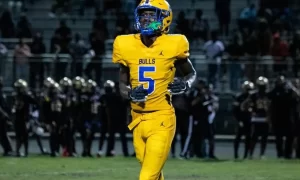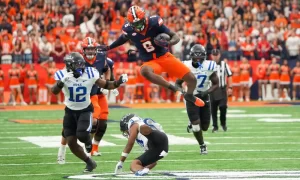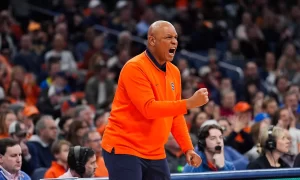Elite basketball minds—whether coaches on the sidelines, analysts in the booth, or players on the court—don’t just watch the game; they dissect it. These leaders spot patterns others miss and turn data into strategy. In this article, we’ll pull back the curtain on how top thinkers use stats, cultivate sharp mental habits, and develop frameworks that give them a real edge. If you’re curious about what separates good from great in hoops IQ, you’re in the right place.
The Foundation: Data-Driven Decision Making in Modern Basketball
Walk into any elite basketball war room and you’ll find more laptops than old-school whiteboards. Gone are the days when gut feeling alone called the shots—today’s sharpest hoops minds crunch numbers, pore over shot charts, and analyze every possession.
Platforms like StakeHunters take this approach a step further for bettors, giving everyone access to transparent performance data. By validating tipster stats and showing verified win-loss records, they bring the same level of accountability to sports betting that coaches expect from their analytics departments.
Data-driven decision making starts well before tip-off. Scouts dissect player tendencies using advanced metrics—think effective field goal percentage or defensive real plus-minus—to spot undervalued talent. Coaches tweak rotations based on pace-adjusted lineups or opponent matchups gleaned from hours of video and stat tracking. During games, even substitutions are influenced by real-time stats on fatigue and efficiency.
Transparency is the glue that holds this system together. When everyone sees the same numbers—whether it’s a coach looking at shot quality or a bettor reviewing a tipster’s ROI—it builds trust. In places like Spain’s ACB League, detailed box scores are public after each game, helping fans and analysts alike make smarter calls.
Bottom line: In both coaching and betting, embracing data isn’t just smart—it’s essential for staying ahead.
Beyond the Box Score: The Metrics Elite Minds Value Most
Elite basketball thinkers don’t just count points or rebounds—they dig deeper. They crave stats that uncover hidden value, like how a player changes the flow of a game or elevates teammates. Instead of fixating on flashy numbers, they focus on advanced analytics: things like Player Efficiency Rating (PER), adjusted plus-minus, and lineup synergy metrics.
These nuanced stats help elite minds spot trends before others do. By interpreting data in context, they see when a “role player” is quietly swinging momentum or when a superstar’s box score hides defensive lapses. This analytical edge isn’t just academic—it directly shapes roster moves, game plans, and championship runs.
Take European leagues, where coaches now pore over on/off splits to adjust rotations mid-game—sometimes benching fan favorites for unsung glue guys who simply make everyone better. It’s not about being flashy; it’s about finding the combinations that win.
Player Efficiency and Impact: More Than Points Per Game
Counting buckets is easy—measuring true value takes nuance. Metrics like PER (Player Efficiency Rating) distill overall performance into a single number but don’t tell the whole story. Elite hoops minds add layers: they study plus-minus to track how teams fare with certain players on court versus off and use on/off splits to gauge ripple effects.
Sometimes these stats upend traditional thinking. A player averaging modest points might actually boost team defense and ball movement when he checks in, making him more valuable than his stat line suggests. Conversely, high scorers with weak plus-minus numbers may be hurting their squad’s overall efficiency.
This approach is gaining traction at every level—from NBA front offices running lineup simulations to EuroLeague analysts debating which role players drive winning margins. Numbers don’t lie, but elite minds know which numbers matter most.
Lineup Synergy and Matchup Analytics
The real chess match starts with lineup combos—not just who plays, but who plays together. Coaches and analysts now leverage advanced lineup analytics to discover which player pairings amplify strengths or mask weaknesses. Swapping one defender or shooter can shift the entire dynamic.
A 2024 article by Advanced Lineup Analysis shows how NCAA staffs rely on scoring differential reports and plus-minus breakdowns to fine-tune rotations in real time. These insights help identify “sticky” lineups that lock down defensively or push the pace offensively—crucial during tournament crunch time.
You’ll see this thinking in places like March Madness, where underdog squads upset blue-bloods by maximizing chemistry over star power. By embracing matchup analytics, elite hoops minds outsmart opponents—and sometimes change basketball history in the process.
The Mental Game: Cognitive Skills That Separate the Best
Elite basketball minds don’t just memorize stats—they process information on the fly, anticipate their opponents’ next moves, and adapt instantly under pressure. These players develop routines that sharpen focus and accelerate decision-making, often staying calm when chaos erupts on the court. Whether it’s breaking down film late at night or visualizing game scenarios, their mental preparation is as meticulous as their physical training. What truly separates these top performers? It’s a blend of cognitive sharpness, relentless discipline, and an ability to inspire teammates. This combination turns raw data into winning plays, shaping leaders who thrive both during clutch moments and in the locker room.
Pattern Recognition and Anticipation
Watch an elite point guard intercept a pass before it leaves a hand or a coach make a lineup switch just before a scoring run—these are examples of high-level pattern recognition in action. Great basketball thinkers spot subtle cues in spacing, movement, or tempo that others miss. They connect these dots fast, turning small advantages into big wins.
This anticipation isn’t guesswork; it comes from hours of film study, situational drills, and a constant hunger to learn. In the EuroLeague, for instance, teams with savvy playmakers consistently outperform because they react to changes in strategy mid-game. These cognitive skills let them disrupt set plays or exploit defensive lapses—often before opponents even realize what’s happening.
Leadership, Communication, and Culture Building
Elite basketball minds know it takes more than talent to win—it takes trust and shared purpose. The best leaders build culture by modeling accountability and keeping communication clear on every possession. They call out screens, set expectations in practice, and create space for teammates to step up.
A 2024 academic study on Team Leadership & Communication emphasizes how effective communication drives team objectives forward and strengthens leadership within elite squads. The research offers practical recommendations: foster open dialogue after games, empower players to give feedback, and establish rituals that build unity.
In the NBA or Europe’s top leagues alike, you’ll find cultures where veterans guide rookies—and those habits fuel championship runs year after year.
Innovation and Adaptation: Staying Ahead in a Changing Game
Basketball never stands still. Strategies shift, new rules reshape play, and fresh technology rewrites the boundaries of possibility. The best minds in the game thrive by embracing these changes, not resisting them. They’re the trendsetters—constantly exploring what’s next, tweaking old habits, and setting benchmarks that others chase.
From experimenting with lineups inspired by analytics to adopting tools that predict player fatigue, elite coaches and analysts turn challenges into opportunities. In recent years, the surge of global talent and changing officiating styles have forced even storied franchises to rethink their approach. In Europe, for instance, coaches have adapted to FIBA’s evolving three-point rules by stretching offensive sets further out.
Ultimately, those who innovate and adapt first don’t just survive—they shape the future of hoops.
Embracing Technology: From Wearables to AI
Today’s top teams aren’t just playing basketball; they’re running high-tech labs on hardwood floors. Coaches use wearables that monitor heart rates, sleep cycles, and movement patterns to catch fatigue before it leads to injury. AI-driven video breakdowns now spot defensive lapses or opponent tendencies that humans miss.
Motion tracking cameras chart every player’s sprint, cut, or hesitation dribble in real time—turning raw data into custom practice plans or mid-game adjustments. Even recovery routines get a boost from apps that tailor nutrition and rest based on each athlete’s unique needs.
Look at Australia’s NBL: clubs there have adopted shot-tracking sensors not only for pro teams but also at youth academies—giving prospects feedback once reserved for NBA stars. It’s proof that technology is more than a buzzword; it’s now a core playbook page for anyone aiming to stay ahead.
Continuous Learning and Openness to Change
The best basketball thinkers are students first—even when they’re coaching legends or front-office stars. They treat every season as a learning lab, searching out new plays from European leagues or digging into sports science journals for an edge. Old assumptions? They’re always up for debate if better data comes along.
A 2024 case study by Basketball Analytics Technology discusses how the NBA’s partnership with Hawk-Eye Innovations brought advanced skeletal data tracking to teams in the 2023-2024 season, significantly enhancing coaching decisions and player performance analytics across the league.
Whether it’s embracing positionless basketball or integrating mindfulness training after seeing its success in Asia, these leaders know change is constant—and curiosity keeps them on top.
Conclusion: The New Gold Standard in Hoops Intelligence
Elite basketball minds aren’t just number crunchers—they’re visionaries who turn data into decisive action. By mastering stats, sharpening their cognitive edge, and embracing new technology, these leaders set themselves apart from the pack. The future of hoops belongs to those who can fuse analytics with gut instinct and inspire teams on and off the court. As the game evolves, so does the definition of intelligence—making adaptability and relentless curiosity the ultimate game-changers.


















